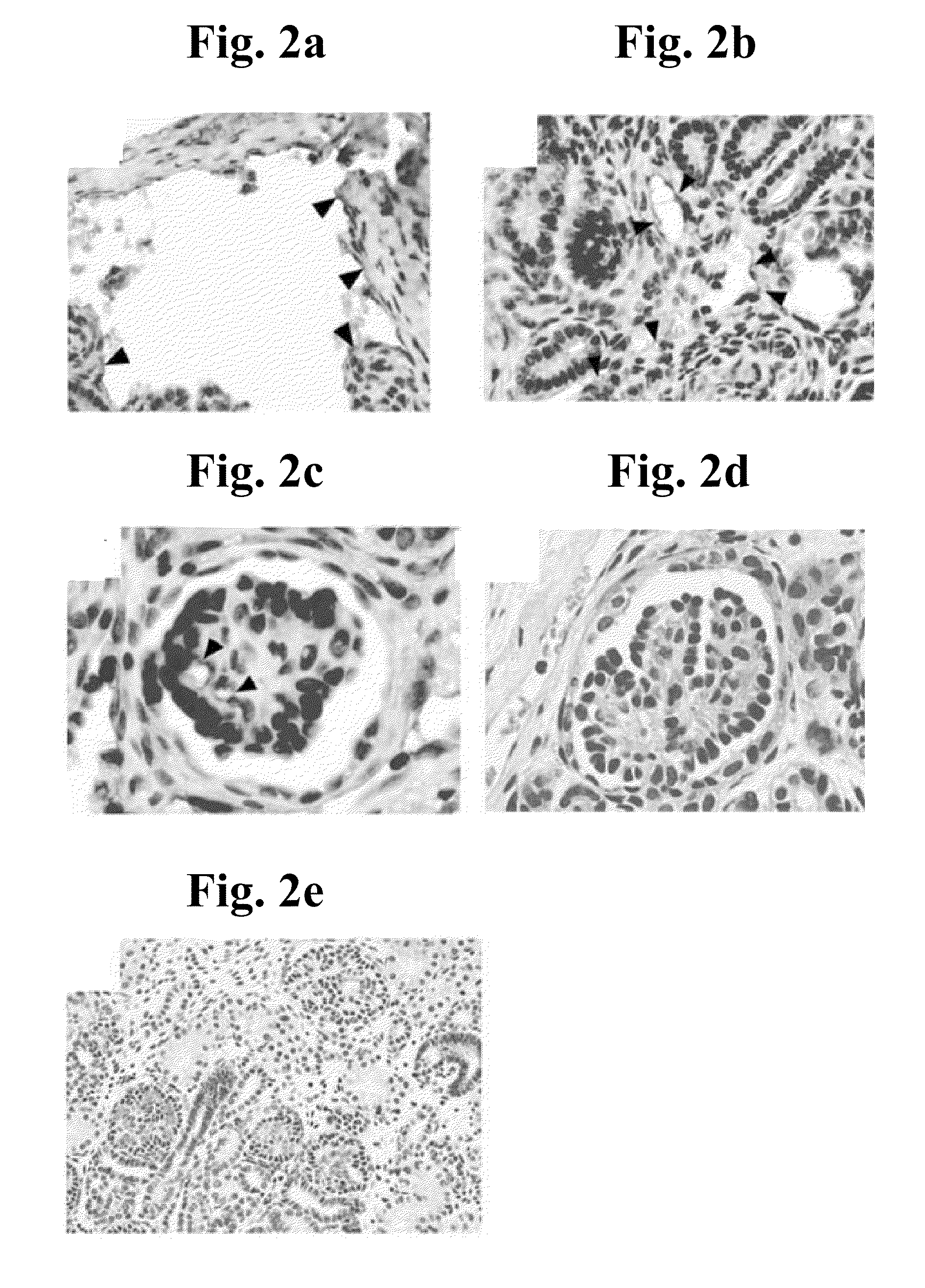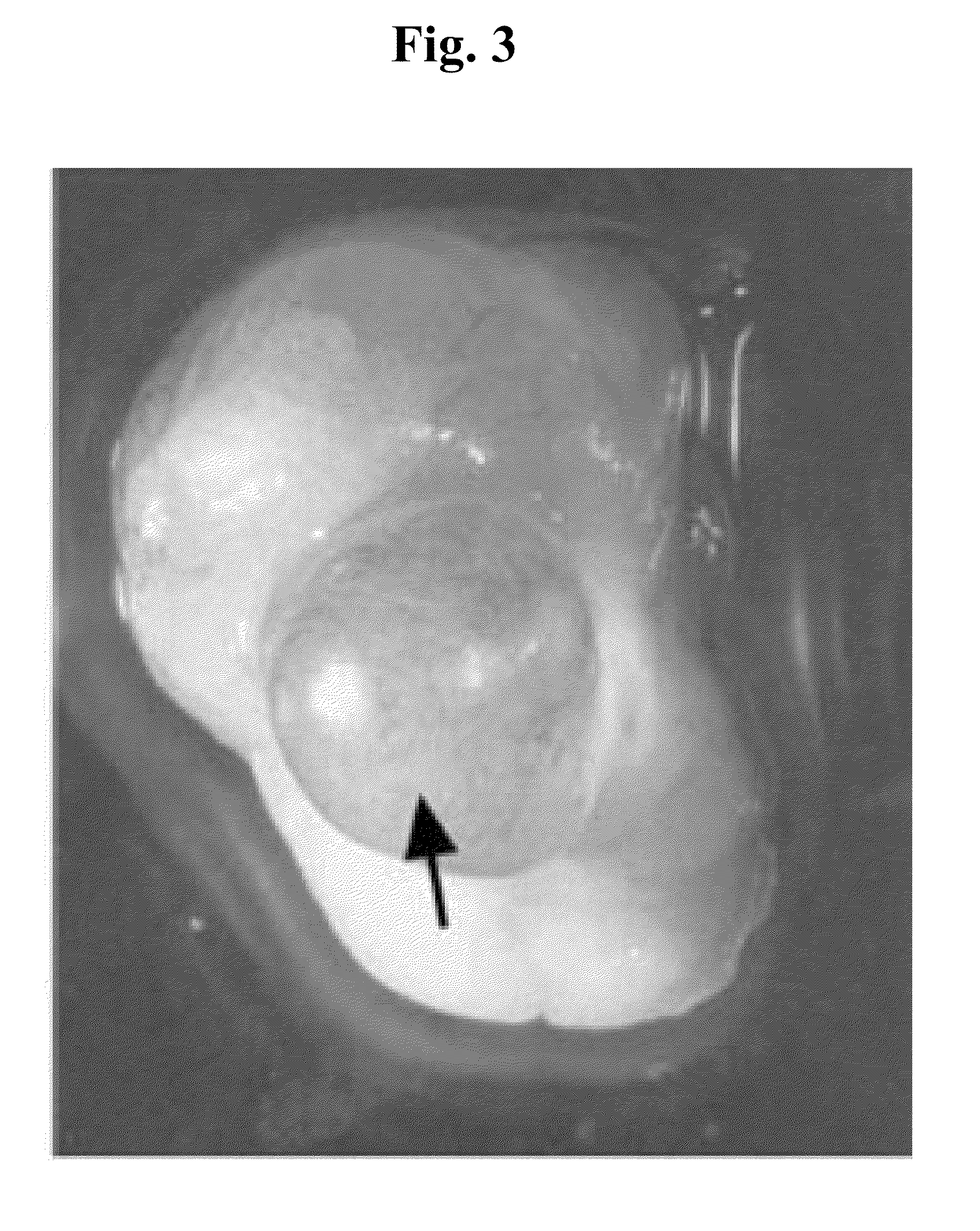Therapeutic transplantation using developing, human or porcine, renal or hepatic, grafts
a technology of developing liver disease and therapeutic transplantation, which is applied in the field of treating disorders, can solve the problems of inability to suitably match allografts to prospective recipients, high stringent and difficult to meet criteria, and insufficient clinical trials, etc., and achieves optimal structural and functional differentiation and well tolerated
- Summary
- Abstract
- Description
- Claims
- Application Information
AI Technical Summary
Benefits of technology
Problems solved by technology
Method used
Image
Examples
example 1
General Materials and Methods—Transplantation of Developing Renal Grafts
[0267]Preparation of Immunodeficient Mouse Hosts Bearing Human Leukocytes: Three month old Balb / c mice (Harlan Olac, Shaw's Farm, Blackthorn, Bicester, Oxon., UK) were subjected to the immune-modification procedure described hereinbelow to replace their leukocytes with human leukocytes, and were used as hosts for the transplantation studies. Balb / c mice were lethally irradiated by split-dose total body irradiation (TBI; 3.5 Gy followed 3 days later by 9.5 Gy) by a 150-A (60) Co gamma ray source (produced by the Atomic Energy Commission of Canada, Kanata, Ontario) with a focal skin distance of 75 centimeters and a dose rate of 0.7 Gy / minute, as previously described (Lubin I. et al., 1994. Blood 83, 2368; Reisner, Y. and Dagan, S., 1998. Trends Biotechnol. 16, 242-246; Segall, H. et al., 1996. Blood 88, 721-730). Bone marrow cells from NOD / SCID mice (Weizmann Institute Animal Breeding Center, Rehovot, Israel) were...
example 2
Human 49- to 56-Day Gestational Stage Renal Grafts, Unlike Later-Stage Grafts, have the Capacity to Generate, in the Absence of Teratoma Formation, Well Developed and Tolerated Functional, Urine Producing Renal Organs Following Transplantation into Immunodeficient Mice
[0274]Introduction: Renal allograft transplantation is presently by far the optimal therapeutic option for renal failure, a highly debilitating and potentially fatal medical condition of significant morbidity. Such transplantation, however, is often impossible to implement due to the difficulty of finding a haplotype-matched kidney donor. Moreover, even when a matched kidney donor is found, allogeneic transplantation is associated with significant drawbacks, such as the requirement for permanent administration of toxic, immunosuppressive drugs such as cyclosporin A to prevent graft rejection. Thus, there exists an urgent need for novel sources of renal grafts suitable for therapeutic transplantation in humans. A potent...
example 3
Unlike Earlier- / Later-Stage Grafts, Porcine 27- to 28-Day Gestational Stage Renal Grafts have the Capacity to Generate, in the Absence of Teratoma Formation, Well Developed and Tolerated Functional, Urine Producing Renal Organs / Tissues Following Transplantation into Minimally Immunosuppressed Xenogeneic Mammalian Hosts
[0298]Introduction: Allogeneic kidney transplantation is the optimal therapeutic option for renal failure, a highly debilitating and potentially fatal medical condition of significant morbidity. Such transplantation, however, is often impossible to implement due to the difficulty of finding a haplotype-matched kidney donor. Moreover, even when a matched kidney donor is found, allogeneic transplantation is associated with significant drawbacks, such as the requirement for permanent administration of toxic, immunosuppressive drugs such as cyclosporin A to prevent graft rejection, and the eventual inevitability of graft rejection in the long-term. Thus, there exists an ur...
PUM
 Login to View More
Login to View More Abstract
Description
Claims
Application Information
 Login to View More
Login to View More - R&D
- Intellectual Property
- Life Sciences
- Materials
- Tech Scout
- Unparalleled Data Quality
- Higher Quality Content
- 60% Fewer Hallucinations
Browse by: Latest US Patents, China's latest patents, Technical Efficacy Thesaurus, Application Domain, Technology Topic, Popular Technical Reports.
© 2025 PatSnap. All rights reserved.Legal|Privacy policy|Modern Slavery Act Transparency Statement|Sitemap|About US| Contact US: help@patsnap.com



